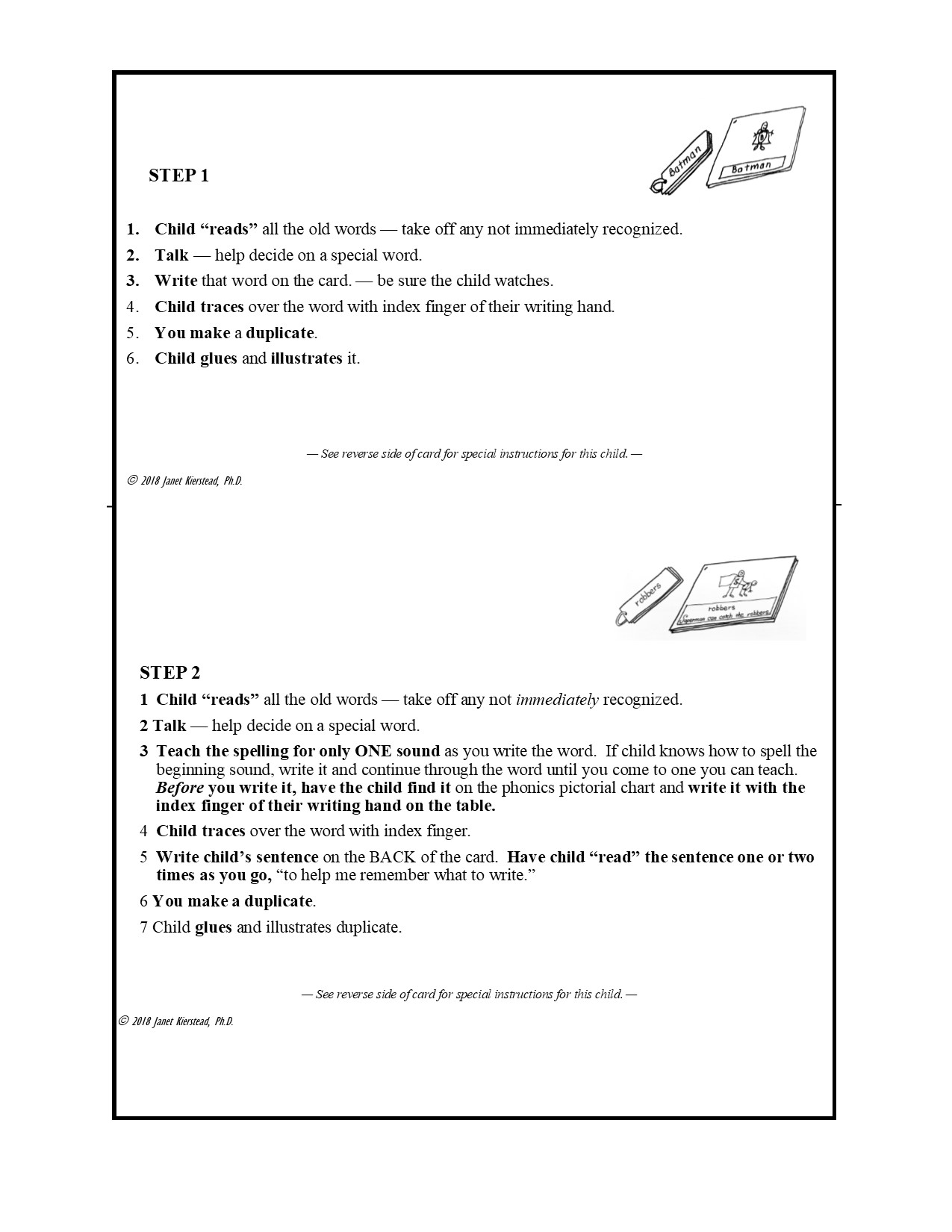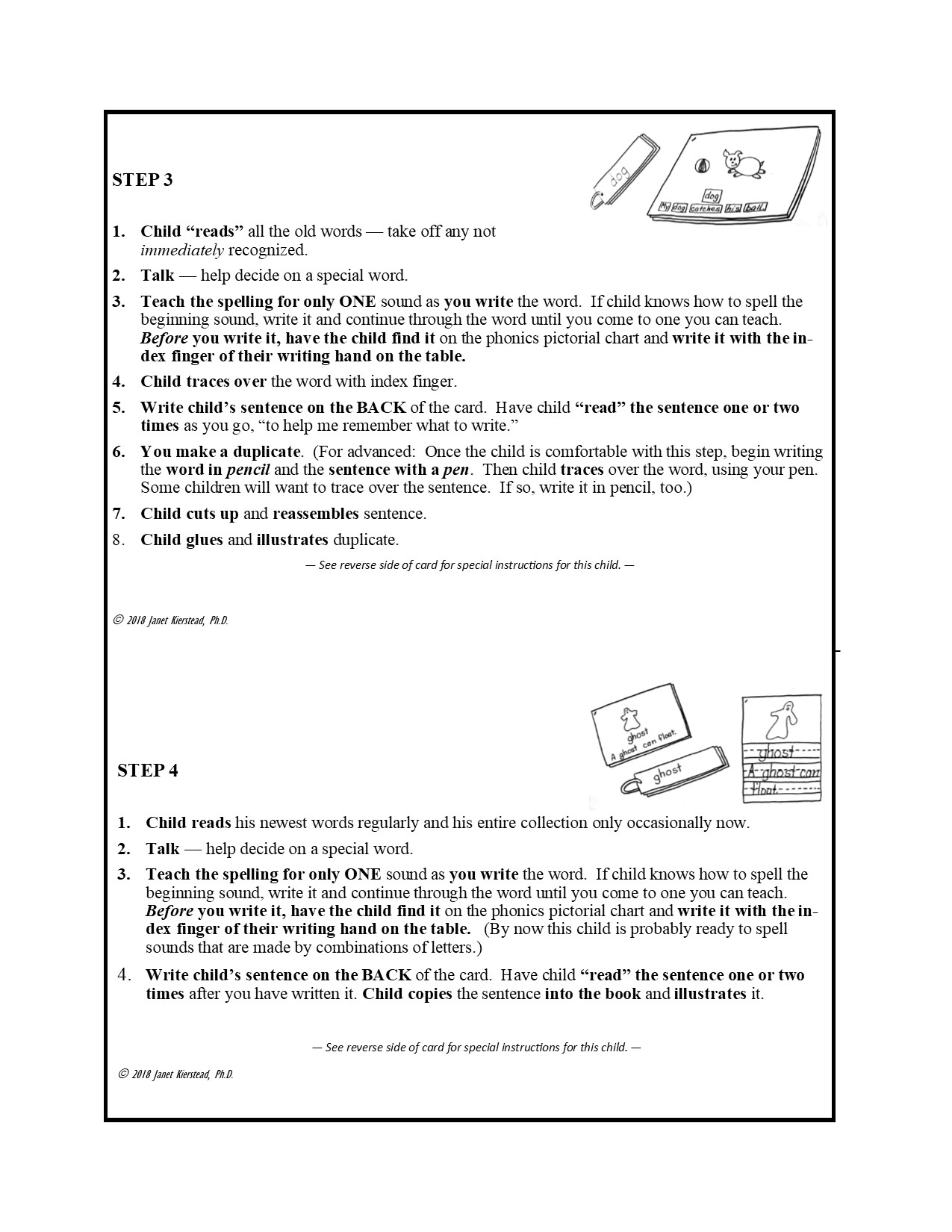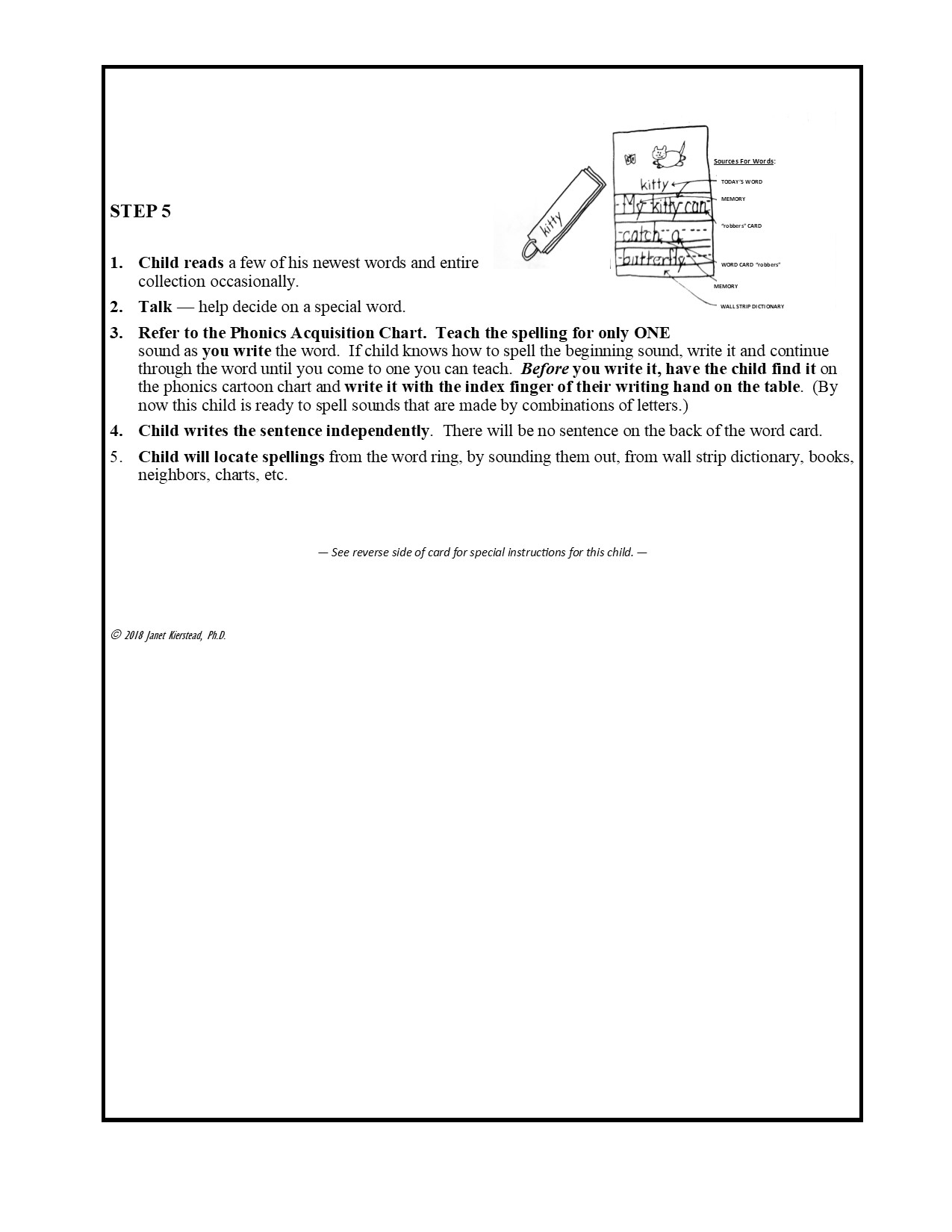Steps-Level Cards for Each Child’s Word Ring
In my description of How A Natural Approach Was Developed, I explained I had come to see my role as something like that of a doctor who prescribes and then has nurses and physical therapists to carry out their instructions between checkups. To accomplish this, I needed more help than my bilingual aides had time to give. So I recruited parent volunteers and cross-age tutors. I found having something this specific they were to do made them very reliable, and we almost always had a parent in the morning, and often a tutor from the 5th grade. (On the very rare occasion that no one came in, some of the 2nd graders would volunteer to help by giving words to the younger ones. Both sides considered that a special treat.)
A new helper sat at my table for a few sessions to watch how I gave words to the children. Then, to make certain they knew exactly what to do with each child, I created the cards below, copied them onto sturdy card stock, and attached the appropriate one to each child’s word ring. This told anyone working with the child which Step they were on, as well as reminded them of the exact procedure for that Step. It also allowed us to exchange written notes about working with that child.
The Effect of Coaxing/Prodding the Children
I assigned children to volunteers randomly by reading to the children a list of who they were to go to for a word that day. I did this during our group meeting, before the helpers arrived, so they did not know which children would be coming to them — only the children knew. For some reason I don’t recall, I decided at one point to also give the helpers a list of who would be coming to them. And in some cases, that had a surprisingly negative effect.
The children had always before decided when they would go to their volunteer. They could either make their drawing first, then get their word, or vice versa. It was up to them. I was also up to them how steadily they worked. Some would stop and watch or talk others for awhile, taking their time, while others worked intently, without breaks. So they showed up at different times, asking their volunteer for their Key Word. But once the helpers knew who they were responsible for working with that day, they began asking the next child on their list to come to them as soon as they had finished with the previous child. In some cases they began to coax/prod them a bit to keep a steady stream of children coming to them. In response, some of the children began to resist, and for the first time, we began to have a few children who had not finished their work by the end of the writing period. Seeing this and having noticed some of the coaxing and prodding, I stopped giving helpers a list of the children I was sending to them. Instead, I reverted to telling only the children, before helpers arrived. With this, the problem disappeared.
I found that experience very interesting: The children didn’t balk at being required to have their clothespin by the end of the work period, but some did resist being prodded, coaxed, or even in some cases, nagged about it!


